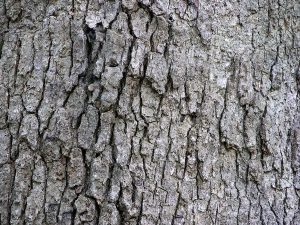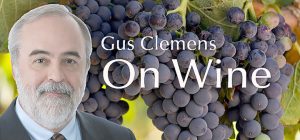What the heck do wine writers mean when they describe wine with adjectives like “chewy” or “crunchy” or “meaty”? Aren’t those words descriptive of chocolate brownies, raw carrots, and T-bone steaks, not an alcoholic liquid?
Tannins cause the unexpected lingo. Tannins are a group of astringent, polyphenolic chemical compounds that bind to proteins and other organic compounds. The astringency causes a dry and puckery feeling when you drink red wine. You also taste tannins in tea and unripe fruit.
The word comes from the Medieval Latin word for oak bark, which was used in tanning animal hides into leather. Wine tannins come from the skins, seeds, and stems of grapes, also from oak barrels.

When you drink wine, the proteins in your saliva interact with tannins. In higher concentrations, tannins strip your mouth of water to create a dry mouthfeel, which creates an instinctive desire to chew. The binding of saliva proteins with tannins also creates a sensation of crunchiness or meatiness. And thus the wine descriptor terms.
People usually associate tannins with wine and tea, but tannins are in noticeable concentrations in other common foods. Walnuts, almonds, and other whole nuts have tannins in their skins. Dark chocolate has tannins. Cinnamon, clove, and other whole spices have tannins. So do pomegranates and açaí berries.
The jury is still out on wine tannins and migraine headaches. If you think tannins cause your migraines, you need to stop consuming foods with significant tannins, not just wine.
If you embrace tannins in wine, tannat—Uruguay’s signature grape—and sagrantino from Central Italy are by far the most tannic wines. In descending order from those leaders come petite sirah, nebbiolo, cabernet sauvignon, petit verdot, and mourvèdre/monastrell.
There are red wines that are low in tannin. They include barbera, bobal, bonarda, malbec, cabernet franc, carignan, cinsault, valpolicella, gamay, and pinot noir. Merlot is a medium-tannin grape, but it often is made in a low tannin style in the winery.
Chew on and crunch this information to get to the meat of what you enjoy in wine.
Tasting notes:
• 19 Crimes Cabernet Sauvignon 2020: Simple, jammy introduction to red wine. $8-12 Link to my review
• Tilia Estate Bonarda, Mendoza 2020: Tasty, affordable way to experience bonarda grape. $9-12. Link to my review
• Robert Mondavi The Reserve Cabernet Sauvignon, To Kalon Vineyard 2017: Defines difference between good cab and exceptional cab. $150-175 Link to my reviewwine, vineyard, viticulture, wine tasting, wine tasting descriptors, winemaker, winemaking, winery, wine and food matching, wine and food pairing, wine tasting notes, wine humor
Last round: When do you go at red and stop at green? When you eat watermelon. Wine time.

